#But his slow movement speed can be unfun
Explore tagged Tumblr posts
Text

Not entirely sure how to feel about this and I always fear my opinion doesn't matter because I tend to be a casual player and not someone that plays to win every match. So take it from someone that's played Trickster for about 3 years and is a very casual player.
The recoil being removed was my favorite change. My hands aren't super steady and the recoil was obnoxious. I've also heard the recoil was worse on console so that was a good change. I'm glad they're keeping that.
Trickster having faster movement speed than Huntress makes sense to me as Huntress can down a Survivor in 2 hits (1 with Iri Head). Trickster can't do that. It takes multiple knives to injure and down someone. Out in the open it's easy but on a lot of maps? Horrible. I love losing bloodlust despite still being in chase because the Killer I'm playing is slow. I love that I can't use my power around said loops because I'm too slow. That is sarcasm. People don't like that he can shred through people out in the open but what if it's not out in the open? He should struggle a lot? That's not fun. I've had matches on The Game where it took forever for me to catch up to people. That's what Survivors want - the Killer to not be able to catch them. Ridiculous xD
I did think Main Event came too easy and too fast. The amount of times I've downed someone and was able to pop Main Event and use it on someone else and then still have knives seemed extremely oppressive. I've said numerous times that's it's a dumb idea to group up against Trickster. It's also hard to unhook against a camping Trickster and I've always hated that.
I've seen people say Trick Blades should be basekit and I don't know how Survivors would feel about that. I use the add-on in nearly every match because they're fun but I also get hits on Survivors that I usually would never get. Is that fun for Survivors? The way people complain, I think they'd complain more if it was basekit.
Like with everything - we'll have to wait and see. I've seen a lot of people say Trickster mains want everything reverted but I just have next to no opinion on most of it. I wanted the recoil gone and I wanted to be a bit faster. As long as they keep the recoil gone, I'm sure I'll be content.
#dead by daylight#dbd#deadbydaylight#I'd like to add that I'm someone that actually likes indoor maps as Trickster#But his slow movement speed can be unfun#I had a match with only 2 Survivors left once on The Game#It took forever for me to catch one of them#It also takes forever to cross from one side of the map to other#Yay I lose a whole gen because I'm slow#Whooooooooo#So I use Lethal Pursuer#But then people bitch about me using Lethal Pursuer
0 notes
Text
Death Stranding is the only walking simulator
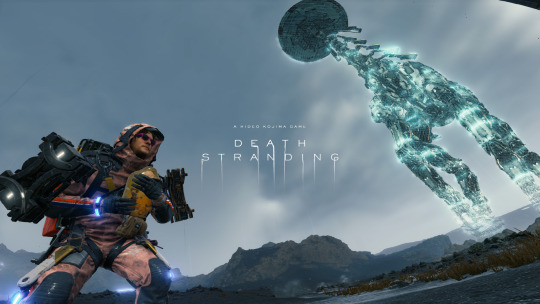
Before the pandemic, I relied on a local laundromat to clean my clothes. Once every week or two, I crammed as many articles from the hamper as would fit into an oblong laundry backpack that looked like it was meant for mountaineering. Then I loaded my laptop into a laptop bag so I could work on work while waiting for my clothes. I strapped on the backpack, slung the laptop diagonal over a shoulder, and took the three-liter jug of detergent in my right hand, leaving my left hand free to grab the house key and work the doorknob.
Then it was a half-mile trudge uphill to the nearest coin laundry. All the while I’d be fighting against gravity and the terrain, constantly using my cargo’s shoulder straps to adjust the weight distribution while dodging patches of dog doo and other pedestrians, sometimes veering off the sidewalk into the craggy outlands of South Brooklyn. When I had the energy, sometimes I tried to knock out other errands on the way, turning it into a strategic exercise in route mapping. Pharmacy-laundromat-supermarket-laundromat-home? Or laundromat-supermarket-laundromat-pharmacy-home? Could I squeeze in a café stop? How much could I carry total? Could I offload anything at any point?
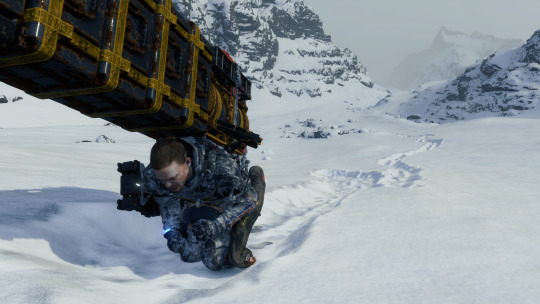
As you might imagine from the above description, laundry day was kind of a drag, and I often dreaded it or put it off until even my least flattering pair of pants smelled from overuse. So I’m beside myself as I declare that Death Stranding, a game whose essential offering is to recreate the laundry day experience almost exactly, is one of the best games I’ve ever played. What might have been a disastrously unfun fetchquest buffet has instead proven a supremely engaging and thematically rich work, not to mention one of the most eerily prescient pieces of pop culture I can recall.

The First Walking Simulator
I’ve heard people pejoratively describe Death Stranding as a “walking simulator.” As far as I’ve seen, this is mostly an exclusionary term “gamers” use to describe games they don’t think belong in their hobby—narrative-driven titles like Gone Home and Life Is Strange, as well as more abstract arthouse titles like Bound and ABZÛ, neither of which have much walking.
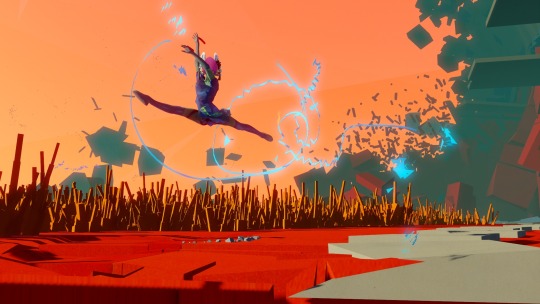

Bound and ABZÛ, two "walking simulators."
In one instance, I watched a Twitch streamer use the term in his rationale for why Death Stranding sounded too boring to stream. This was particularly ironic because he was streaming Killer 7 at the time, and had just finished (correctly) explaining to his viewers that Killer 7 was “basically a point-and-click game with walking.” I’m a Killer 7 fan myself, but I feel like Killer 7 fans are actually the perfect audience for Death Stranding, with its genre-hopping tone, lightweight mechanics, overwrought lore, and densely loaded symbology. They even share a number of specific ludonarrative concepts, such as having to clean up after the dead, the use of blood for bullets, and invisible enemies. Suda 51 and Kojima are probably the two most prominent Japanese game auteurs, as well as friends with a history of collaboration.
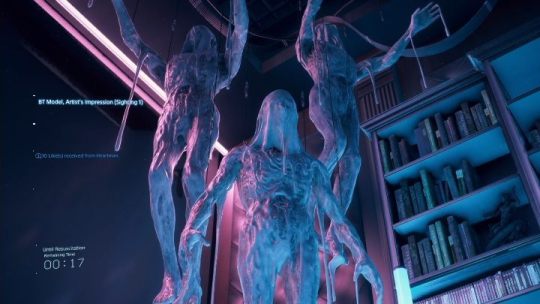


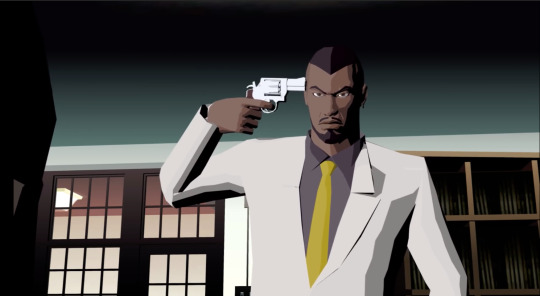
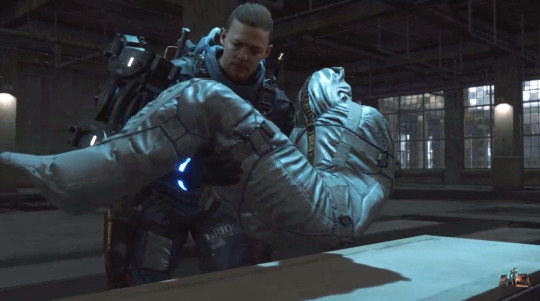


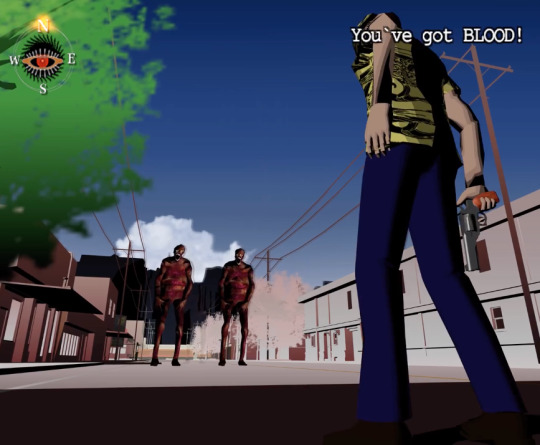
↑ Not to belabor a side point, but there's some thematic overlap is all.
Even putting all that aside, the so-called “walking simulator” genre essentially is the modern-day "point-and-click with walking." Killer 7 was just a decade early. Death Stranding, meanwhile, doesn't play like those games at all. Those games are essentially on rails, propelled forward solely by their narratives. In Death Stranding, you can shove the narrative completely aside and spend a hundred hours playing with hi-tech toys, hiking through the wilderness, 3D-printing infrastructure, off-roading on an electric motorcycle, placing terrorists in embarrassing positions, snowboarding down mountains, and hunting giant monsters. Death Stranding has more in common with Metal Gear Solid V or Grand Theft Auto than with any game that’s ever been called a walking simulator. The accusation irked me.
But the more time I spent with Death Stranding, the more I had to face the facts: it simulated walking really well. Better than any other game I could think of. Where in most games, topography amounts to little more than a cosmetic feature, in Death Stranding it affects your every step. Any incline steeper than forty-five degrees and you start to lose stamina. A steep decline affects your balance, as does turning. You can manipulate your shoulder straps in real time to slow your exhaustion and maintain equilibrium, but it comes at the cost of movement speed. Sprinting is efficient, but if you have a heavy load, one little rock on the ground could send you tumbling headlong down a mountain. Crossing streams drains stamina quickly and can be dangerous if you wade too deep, but the water also replenishes the canteen you use to restore stamina. Every on-foot trek from point A to point B is an exercise in mindfulness, because every step counts, and every misstep hurts. Virtually no other game offers this level of connection between player and terrain—least of all so-called “walking simulators,” where typically walking is just a side-effect of looking. “Looking simulators” is what those games are. Even games that have inventory systems with weight management elements don’t have real-time cargo shifting. So yes, I suppose Death Stranding is a walking simulator—the only one.
In writing this, I discovered Polygon has an amusing video that arrives at a similar conclusion, but it doesn't get into why simulated walking would make for an enjoyable game. I'll get more into this in Part 2 of this three-part piece, coming very soon!

#death stranding#gaming#games#video games#criticism#analysis#review#reflections#bts#killer 7#kojima#capcom#suda 51#bt#heaven smile#laundry#walking simulator#walking simulators#abzu#bound
5 notes
·
View notes
Text
Dragons of Tiamat - Opposition
Overview - Dragon Chassis - Templates - Deeds - Opposition - The Prison
These are the statistics and notes on the various members of the Smith-Cult. I’ve been playing and mostly DMing 3rd edition since release, way back in 2000. Since then, I’ve played in multiple d20 products (Mutants & Masterminds, SAGA Star Wars, d20 Modern), built two 3.75s personally (Umzamo and Umzamo Retro, with distressingly little overlap between them), been involved in another (Project Draco, a codified set of house rules that got really out of hand), and frankly, got real tired of actually building the NPCs and monsters skill point by skill point. It helps that I’ve also been playing other systems, some of which realize that you can give the DM the formulas to create opposition against a particular level, and not sweat the particulars (MM3 on a business card being the pinnacle of elegance, here).
I DMed with the 4e encounter builder, and I am never going back. Bring on the minions, leaders, elites and bosses. Bring on the skirmishers and artillery, the controllers and brutes! So, these are 3.5 monsters, written in the mode of 4e, ruthlessly cut down to just their combat stats.
For morale, I used a quick and dirty version from Umzamo Retro. When an individual is reduced to half health or a side to half numbers, roll 2d6 (per group of enemies, or individual foes, per DM discretion). If the number exceeds the foes' morale value, they retreat, surrender, rout, etc, as appropriate.
Cult Apprentice (minion brutes) Aproned assistants with pale yellow belts. AC 13, HP 10 (2 HD), Morale 7 Fort +3, Ref +1, Will +1 Init +1; Spd 30ft Melee Tools +4 (1d10+2) Aid Another: standard: when adjacent, give ally +2 to AC & saves or +2 to-hit and DCs.
DM Commentary: Minions are incredibly useful as fight-filler. Minions that buff the enemies are dangerous, but easy to deal with.
Cult Blades (skirmishers) Dancing swords, held by a severed hand, capped with iron. The sword's hilt is decorated with a white pennon. AC 17, HP 15 (3 HD), Morale 12 Fort +2, Ref +5, Will +2; no construct immunities. Init +3; Spd 50ft fly (perfect) Melee Self +7 (1d6+1/19-20) Harry: immediate: Ref DC 14 partial. Match the movement of a threatened target, up to your speed. This movement doesn't provoke. With a successful save, the blade can only move 5ft in pursuit.
DM Commentary: Almost a weird sort of defender. The harry ability didn’t see a ton of use, but it does mean that (baring evasion), the blades can always follow 5ft steps. Which is vexing for mages, which was the point.
Cult Guardian (defenders) Imposing figures in over-decorated armor, with broad shields and wickedly hooked axes. White crests and belts. AC 18, HP 20 (3 HD), Morale 9 Fort +5, Ref +2, Will +5 Init +1; Spd 20ft Melee Axe +7 (1d8+3/x3) Combat Reflexes: 2 AoOs per round. Hook & Bash: standard: Fort DC 14 partial. Requires to-hit roll vs AC. Push one target 10ft, pull another 10ft. With Fort save, only 5ft. Intercept: immediate: uses AoO. Take a blow for an ally within 10ft. Move adjacent, and take damage from the successful hit.
DM Commentary: The more defender-y qualities didn’t see much use, mainly because of enemy placement - the high value enemies were pretty well isolated, and the PCs were good about avoiding AoOs.
Cult Sparkers (artillery) Somewhat squirrely figures in short white tunics with a red belt. They frown, and fire sparks in their hand. AC 14, HP 15 (3 HD), Morale 8 Fort +2, Ref +5, Will +5 Init +2; Spd 30ft Ranged Sparkspray +4 touch (1d8+3 fire). Range: 30ft. Kindle: standard: Will DC 14 partial. Target takes 1d6 fire damage and, with a failed save, ignites. They burn for 1d6 fire damage per round, until extinguished.
DM Commentary: These guys died super fast, mostly to breath weapons. I fluffed them as pyrokinetics, and kindle had them summon a ball of fire and press it into their own head, but the fire appeared in the target;s head. I liked that visual.
Cult Runesmiths (controller) Runemarked aprons and blue belts over elaborate armor. They bear a large hammer, the head etched with occult markings. AC 19, HP 25 (4 HD), Morale 10 Fort +6, Ref +3, Will +6 Init +1; Spd 30ft Melee Maul +8 (1d10+4+ slow 1 round [Will DC 15 negates]) Runetrap: standard: Place a rune in the air within 30ft. It explodes with arcane energies when triggered, either damaging foes or healing allies. Moving into the square the rune occupies triggers it. It damages or heals the triggering creature for 2d6+3. Others enemies or allies within 10ft receive half of the same effect.
DM Commentary: The runetraps were kind of hobbled by PC mobility. Once they tripped one, they studiously avoided them for the rest of the fight. Making the runes take up 10ft squares would have been dramatically more dangerous.
Cult Jailor (elite controller) A broad man festooned with keys and trinkets. He hefts a dull iron ball in his palm. AC 19, HP 50 (6 HD), Morale 11 Fort��+8, Ref +4, Will +8 Init +1; Spd 30ft Ranged Binding Bands of Bilarro +7 touch (1d6+3, immobilizes. Constricts for 1d6+3 on subsequent rounds. Escape with DC 20 skill check or DC 15 Str check.) Range 30ft. Bouncing Balls of Bilarro: encounter, recharges when bloodied; standard: rain of iron spheres dealing 3d6+3 damage in a 10ft radius. Ref DC 16 for half damage. Fort DC 16 partial - Success: no effect. Failure: -2 to hit for 1 round. Range 30ft.
DM Commentary: It was dazed on failed Fort, attack penalty on successful Fort, but I nerfed it before I dropped it for the first time.
Prison Wrack Turrets Provide +4 AC to gunner. Ranged Wracking pain bolt +6 touch (2d6+3; Fort DC 14 for half damage. On failed save, immobilize for 1 round.)
DM Commentary: They were manned by apprentices initially, but those got knocked out quick (breath weapons, you know the drill). Should have made the turret shield give +4 Ref as well. Another nerf when I used them; the save was originally only against the immobilize, which lasted for 1d4+1 rounds. Again, made sense from a world-building perspective, but unfun to have used against you.
The enemy counts in the final battle were (approximately) 6 apprentices (scattered throughout; 2 immediately jumped on the turrets), 4 cult blades (arose from level 2 and 3 armories), 4 cult guardians (1 on level 1, 1 next to the PCs on level 2, and 1 on level 3), 2 cult sparkers (level 1), 2 runesmiths (2 on level 2), and the cult jailer (on level 1).
0 notes